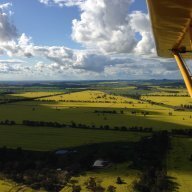-
Posts
1,055 -
Joined
-
Last visited
-
Days Won
14

Roundsounds replied to BrendAn's topic in Aircraft Incidents and Accidents

Roundsounds replied to BrendAn's topic in Aircraft Incidents and Accidents

Roundsounds replied to BrendAn's topic in Aircraft Incidents and Accidents

Roundsounds replied to jackc's topic in Governing Bodies

Roundsounds replied to Thruster88's topic in Governing Bodies

Roundsounds replied to Thruster88's topic in Governing Bodies

Roundsounds replied to Thruster88's topic in Governing Bodies

Roundsounds replied to FrankPilot's topic in Aviation Videos

Roundsounds replied to D.G's topic in Student Pilot & Further Learning

Roundsounds replied to Thruster88's topic in Governing Bodies

Roundsounds replied to Thruster88's topic in Governing Bodies

